![]()
| Proposal 2, Page 5 (continued from Page 4) | ||
| THE JULES VERNE MACHINES | ||
|
The Although the stories will be set in many different locations, there will be a permanent Jules Verne set This will be the interior of the railcar style gondola that hangs from Verne's helium-filled airship - his main means of traveling around the globe. On the outside, this will have the solid, brassbound, heavy-riveted look that comes to mind when we think of “The Nautilus” or Verne's moon-ship; inside it will be furnished in Victorian hi-tech with red velvet drapes, deep armchairs, leather-bound books and gleaming telescopes. Often, the exotic locations in which Jules finds himself will only need to be suggested rather than shown, because the balloon has landed in the midst of them. |
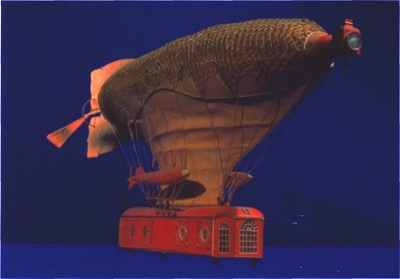 |
|
|
Victorian Airship The
Victorian Airship was developed in the year 1867 by Colonel Musgrove
Montgomery, late of Her Majesty's Guards, to make Britain the world's
supreme air power. With a fleet of machines such as this, Colonel
Montgomery planned to bring the United States back into the British
Empire. How Jules Verne, Passepartout and Phileas Fogg saved President
Grant from being displaced by Queen Victoria is one of the author's most
exciting adventures. |
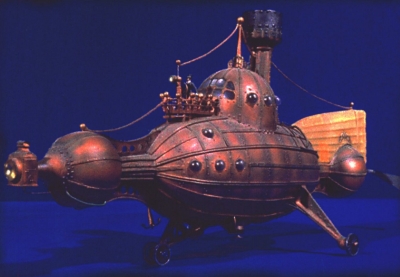 |
|
|
Whaleship Atlantica The Whaleship Atlantica is one of the great mysteries of the sea: a machine at least three thousand years old, built in the shape of a cephalopod - from metals unknown on earth. It is while trying to understand the origins of this strange device that Jules Verne has his first contact with aliens from the far side of the galaxy. |
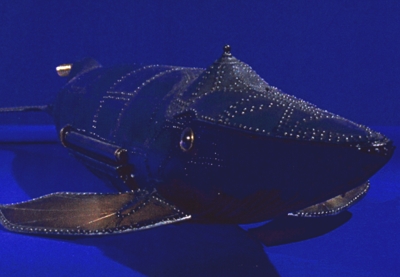 |
|
|
The Chronological Displacement Device The
Chronological Displacement Device is the forerunner of H.G.Wells’ Time
Machine, and is capable of taking Jules and his friends into some of the
most exciting moments of human history, from the Roman arena to the
siege of Troy or the Gunfight at the O.K.Corral. Few people know that
had it not been for Jules’ possession of the Displacement Device in
the year 1840, the United States might have stopped at the Rocky
Mountains and California might today be controlled by a Russian Tsar. |
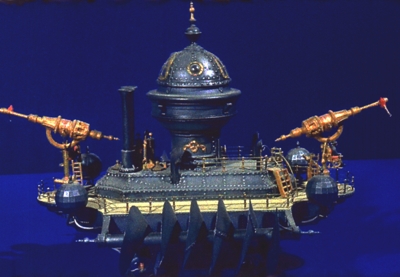 |
|
|
Amphibian Carriage The Amphibian Carriage is a pleasure-vessel capable of taking the rich and delicate on luxurious voyages on any terrain whether land or sea. When Phileas Fogg wins it in a wager aboard a Mississippi side-wheeler Jules and his friends find themselves racing the Amphibian down America's greatest river in competition with none other than Captain Mark Twain himself... |
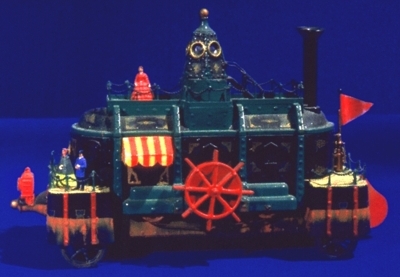 |
|
|
Hyperion Side Paddler The Hyperion Side Paddler travels the skies like a stately Greek galley - but a galley powered by steam. It was created by the wealthy aesthete William Crockett to cruise through the valleys of the high Himalayas in search of the legendary monastery of Shangri-la: and it is while journeying with Crockett that Jules Verne learns of the famous Tibetan "Book of Creation" - and finds an amazing clue to the very origins of the universe. |
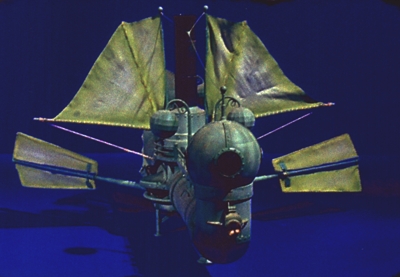 |
|
|
Calimus The Calimus is a machine inspired by the most fearsome creature of the deep, the Giant Squid, by Professor Emil Strabismus of the University of Narbonne. Designed to travel to the deepest reaches of the ocean, the Calimus will then bore into the ocean floor in search of regions unknown to man. It is in this machine that Jules Verne discovers what really happened to the lost civilisation of Atlantis. |
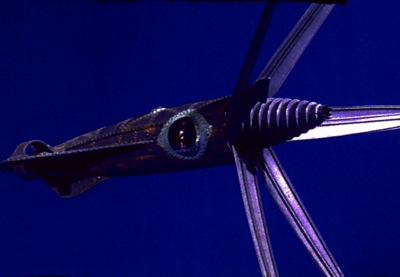 |
|
Continued on Page 6